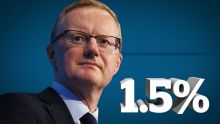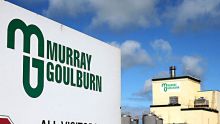Woolworths was expected to beat Coles in the latest quarterly bout of the great supermarket war. But the release of its third-quarter sales stunned just about everyone. Woolworths shot the lights out.
To have produced a 5.6 per cent surge in supermarket sales means Woolworths is taking customers from Coles, Metcash and possibly even Aldi.
More BusinessDay Videos
Woolworths reports strong sales growth
Woolworths announces a strong growth in supermarket sales, with like-for-like sales rising 4.5 per cent in the March quarter.
Woolworths has been in fightback mode for two years after losing to Coles and Aldi on almost every growth measure for the previous five. It's invested $1 billion during its comeback to improve its appeal - most of which has been used to cut the cost of goods on the shelf.
Not since 2010 has Woolworths scored a quarterly sales number this big - an outcome fed by a large increase in the number of transactions on the back of a 2.5 per cent fall in shelf prices.

Coles produced a modest 0.8 per cent sales increase in the equivalent quarter as it sought to go head to head with Woolworths on prices.
Both the big supermarket chains have only a few years to get match fit on pricing and service before the real threat enters the Australian market - Amazon. A recent UBS report predicts Amazon will cut the earnings of Coles and Woolworths by 8 per cent within five years.
Woolworths chief executive Brad Banducci says its supermarkets business is still in the early stages of a (five-year) turnaround.
Where this intense price war goes from here depends on Coles' appetite for an even greater competitive response.

Woolworths, however, is clearly not letting up, with Banducci saying on Tuesday he is "focused on making sure we continue our progress in rebuilding sustainable sales momentum for the remainder of financial year 2017 and into financial year 2018".
While investors will be pleased with Woolworths' speedy progress in boosting sales, the pressure this pricing war will put on profits is an issue investors should be concerned about.
On Tuesday, Banducci delivered a warning on profits, saying: "The second half of financial year 2017 will continue to reflect the financial impact of higher costs in key areas such as team incentives, depreciation and team training. We expect to see further improvements in stock loss in the second half, however, this may be partially offset by the impact of continued input cost price increases (particularly in meat and produce) and our continued response to ongoing competition and promotional intensity."
In other words, the push for market share will come at a cost to profit margins. This is the reason the share price response to Woolworths' sales blitz was muted, with the stock moving up about 1.5 per cent in early trading on Tuesday.
Meanwhile, it seems the focus on fixing the flagship supermarkets business has pushed the revival of its other retail brands down the priority list.
Big W remains a basket case for Woolworths with its total sales still in freefall. They declined 6.1 per cent during the third quarter - worse than the same quarter last year when sales slumped 3.2 per cent.
Under Banducci, Woolworths closed down its ill-fated home improvement store, Masters, and last year sold its petrol stations for $1.8 billion.
However, the company has dashed investors' hopes that there is any near-term chance of an improvement in Big W's performance, saying it requires a multi-year turnaround.
A few months back, Woolworths forecast it would lose $88 million in the second half of 2017. On Tuesday, it revised its prediction to an even uglier loss of between $115 million and $135 million.
It allows Big W's arch rival, Kmart (owned by Wesfarmers), greater breathing space to continue to improve its already stellar performance.
















0 comments
New User? Sign up